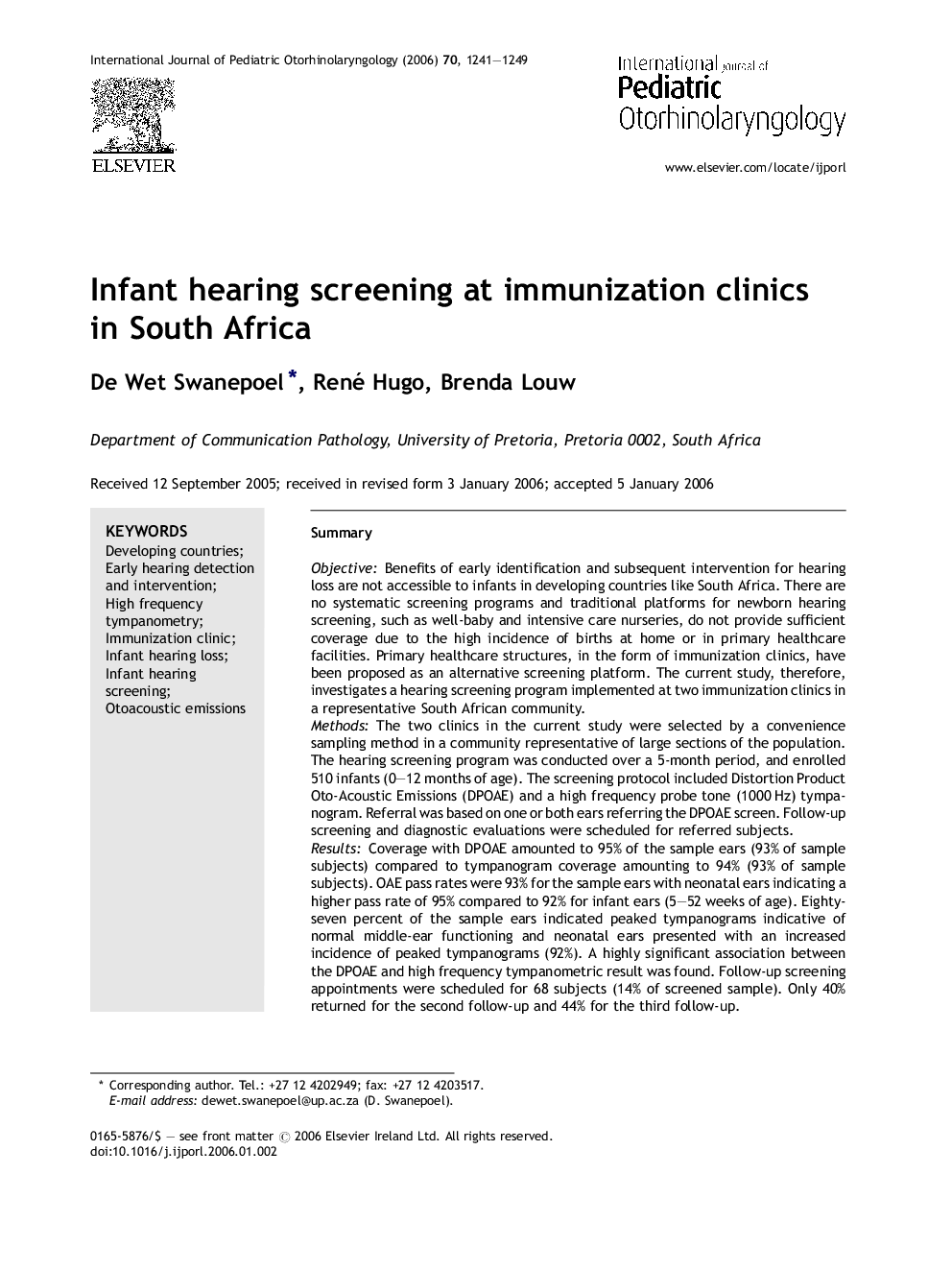| کد مقاله | کد نشریه | سال انتشار | مقاله انگلیسی | نسخه تمام متن |
|---|---|---|---|---|
| 4115108 | 1606105 | 2006 | 9 صفحه PDF | دانلود رایگان |

SummaryObjectiveBenefits of early identification and subsequent intervention for hearing loss are not accessible to infants in developing countries like South Africa. There are no systematic screening programs and traditional platforms for newborn hearing screening, such as well-baby and intensive care nurseries, do not provide sufficient coverage due to the high incidence of births at home or in primary healthcare facilities. Primary healthcare structures, in the form of immunization clinics, have been proposed as an alternative screening platform. The current study, therefore, investigates a hearing screening program implemented at two immunization clinics in a representative South African community.MethodsThe two clinics in the current study were selected by a convenience sampling method in a community representative of large sections of the population. The hearing screening program was conducted over a 5-month period, and enrolled 510 infants (0–12 months of age). The screening protocol included Distortion Product Oto-Acoustic Emissions (DPOAE) and a high frequency probe tone (1000 Hz) tympanogram. Referral was based on one or both ears referring the DPOAE screen. Follow-up screening and diagnostic evaluations were scheduled for referred subjects.ResultsCoverage with DPOAE amounted to 95% of the sample ears (93% of sample subjects) compared to tympanogram coverage amounting to 94% (93% of sample subjects). OAE pass rates were 93% for the sample ears with neonatal ears indicating a higher pass rate of 95% compared to 92% for infant ears (5–52 weeks of age). Eighty-seven percent of the sample ears indicated peaked tympanograms indicative of normal middle-ear functioning and neonatal ears presented with an increased incidence of peaked tympanograms (92%). A highly significant association between the DPOAE and high frequency tympanometric result was found. Follow-up screening appointments were scheduled for 68 subjects (14% of screened sample). Only 40% returned for the second follow-up and 44% for the third follow-up.ConclusionsImmunization clinics indicate promise as infant hearing screening platforms, but identification of only bilateral hearing losses may be warranted initially to keep referral rates acceptably low. In addition to this efficient tracking systems are necessary to ensure acceptably high follow-up return rates are reached over time.
Journal: International Journal of Pediatric Otorhinolaryngology - Volume 70, Issue 7, July 2006, Pages 1241–1249